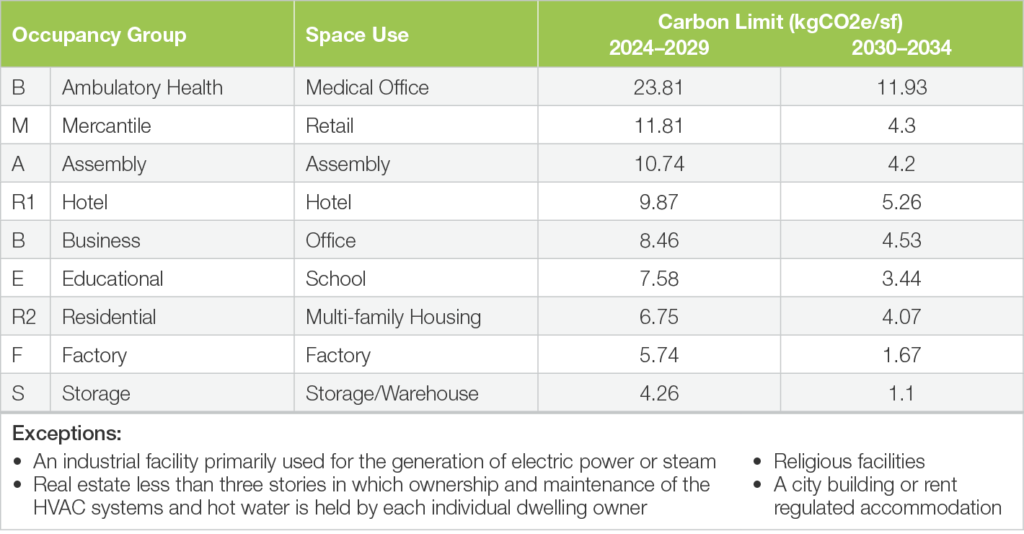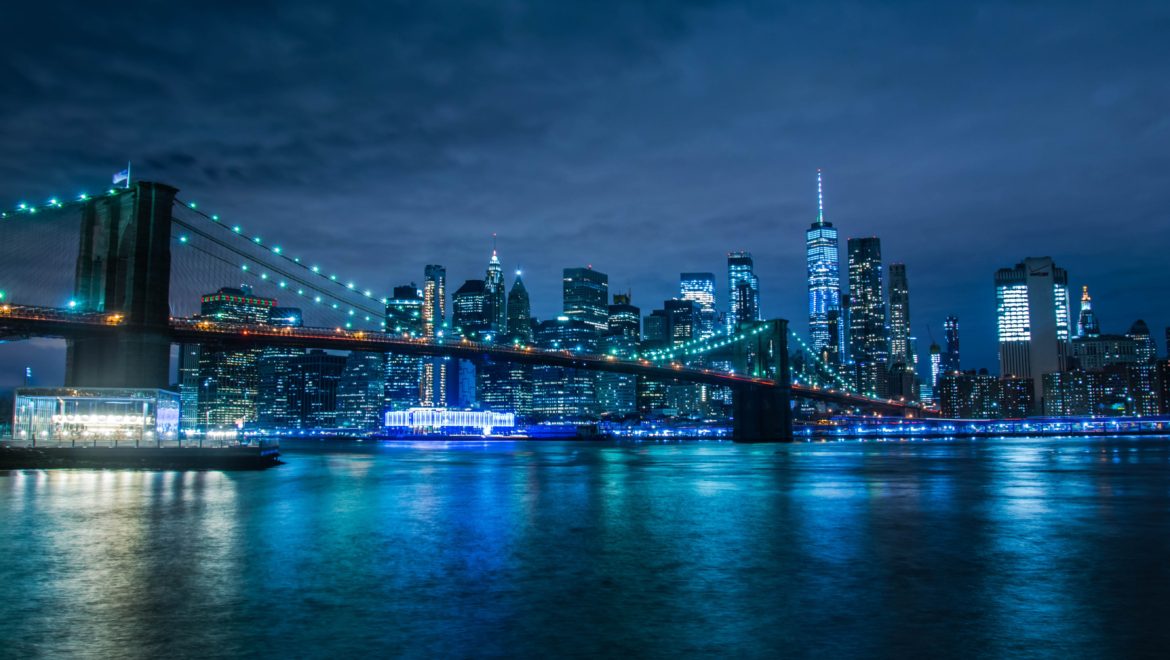If you own commercial property in New York City, you’ve surely heard about NYC Local Law 97 (NYC LL97). In 2019, New York City launched extremely ambitious, performance-based climate legislation under the Climate Mobilization Act which puts the city on a path for a drastic reduction of greenhouse gas emissions. NYC LL97 is one of ten bills included in the new legislation which requires the city’s largest commercial buildings to reduce their emissions by 40% by 2030 and 80% by 2050–relative to the buildings’ emissions for the calendar year of 2005.
The Progressive Caucus of New York states, “Outdated and inefficient systems waste vast amounts of energy, making large buildings the worst culprits of climate pollution in New York City. [The] bill will require the city’s large buildings – those 25,000 square feet or larger – to slash their greenhouse gas emissions by 40% by 2030. These new standards will require retrofitting buildings with new energy-efficient technology, creating a cleaner city as well as thousands of jobs in renovation and construction.”
Not only does LL97 provide social and environmental benefits, but reducing emissions by integrating clean, renewable energy into a building’s overall energy strategy may deliver financial benefits to property owners as well. Additionally, compliance with LL97 enables environmental, social and corporate governance (ESG) oversight–a growing priority among organizations nationwide. An organization’s ESG ranking can represent its risks and opportunities profile, influence its access to capital, and demonstrate its ability to create long-term value.
What is a “Covered Building” Under NYC LL97?
The law applies to existing buildings, new construction, and major renovations. The determination of a “covered building” under LL97 is based on its listing in the records of the department of finance: (i) a building that exceeds 25,000 gross square feet or (ii) two or more buildings on the same tax lot that together exceed 50,000 gross square feet (9290 m2 ), or (iii) two or more buildings held in the condominium form of ownership that are governed by the same board of managers and that together exceed 50,000 gross square feet (9290 m2 ).
NYC LL97 Building Occupancy Types, Timeline and CO2 Limits:

When Do Commercial Buildings Need to Comply with NYC LL97?
LL97 carbon limits begin to take effect in 2024. Starting in 2025, covered buildings will need to submit a report showing their carbon emissions in 2024. Any buildings that release carbon emissions above their calculated limit will be fined. There are specific deadlines and rigid reporting requirements outlined year over year to ensure that metrics and goals are met. Owners of non-compliant buildings can potentially face multimillion-dollar annual fines. For example, a fine of up to $268 will be implemented annually for every metric ton over the required limit and additional fines will be added for false, inaccurate, or tardy reporting.
What Are the Emissions Requirements of NYC LL97?
Local Law 97 establishes building emission limits up to 2050 with a tiered approach toward CO2 reduction as indicated in the chart above. Buildings covered by the law must submit an emissions intensity report to the Office of Building Energy and Emissions Performance on May 1st of every year, starting in 2025. The Office will review and may approve applications for alternative methods of compliance “including adjustments of emissions limits, deductions for the purchase of greenhouse gas offsets or renewable energy credits, deductions for the use of distributed energy resources, and adjustments for special categories of buildings or for special use and occupancies.” Because emissions analysis, benchmarking and reductions programs require time and resources to affect change, it is essential that building owners begin the process immediately.
Overview of NYC Local Law 97:
- LL97 establishes CO2 emissions limits for covered buildings in New York City.
- LL97 impacts approximately 57,000 buildings in New York City and takes effect in 2024.
- The law requires reduction of building-based emissions by 40% as of 2030 and 80% by 2050.
- The law sets requirements for two initial compliance periods, 2024-2029 and 2030-2034.
- Alternate compliance options are allowed for certain types of buildings such as city-owned buildings and churches and include the purchase of greenhouse gas (GHG) offsets and renewable energy credits (RECs) as well as the use of distributed energy resources (DERs).
- Building owners are responsible for compliance and must submit emissions reports yearly, beginning in 2025.
- This law is more stringent than similar laws across the U.S. because this bill impacts existing buildings, in addition to new construction and major renovations.
- The fines include a penalty for noncompliance that is not more than $268/metric ton of CO2 that exceeds the annual building emissions limit, $500,000 for false reporting, and a penalty for failure to file a report.
- The law establishes the Office of Building Energy and Emissions Performance, which is responsible for overseeing the implementation of LL97 and for convening an Advisory Board to provide recommendations regarding long-term planning for sustainability and continued GHG reductions.
- The Office of Building Energy and Emissions Performance is also required to submit a Carbon Trading Study regarding a citywide carbon trading system by 1/1/21.
- New York City will create rules regarding the calculation of greenhouse gas use based on energy consumption by 1/1/23.
Because emissions analysis, benchmarking and reduction programs require time and resources to affect change, it is essential that building owners begin the process immediately. As part of the NextEra Energy family of companies, which is the world’s largest producer of wind and solar energy, Premier Power Solutions is uniquely positioned to assist organizations with analysis, insight, reporting, and emissions reduction initiatives to assist you with NYC LL97 compliance.
We will continue to closely monitor New York City Local Law 97 to provide updates, recommendations, and services to help you meet your sustainability and NYC LL97 compliance goals. If you have questions about how to initiate a carbon reduction strategy or would like to learn more about renewable energy options for your commercial property, please contact us. We are here to help!
Call: 724-458-5600 or Email: info@trustpps.com
References
1.https://nycprogressives.com/2019/04/18/new-york-city-passes-climate-mobilization-act/
2.https://www1.nyc.gov/site/buildings/codes/local-laws.page
3.https://www1.nyc.gov/assets/buildings/local_laws/ll97of2019.pdf

